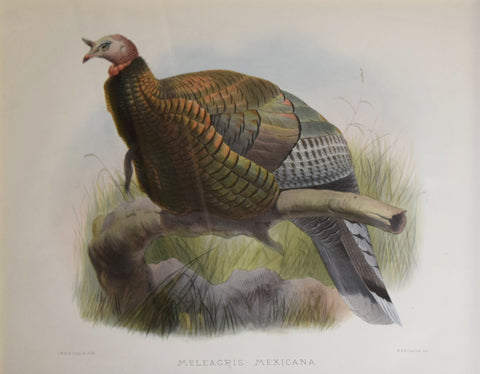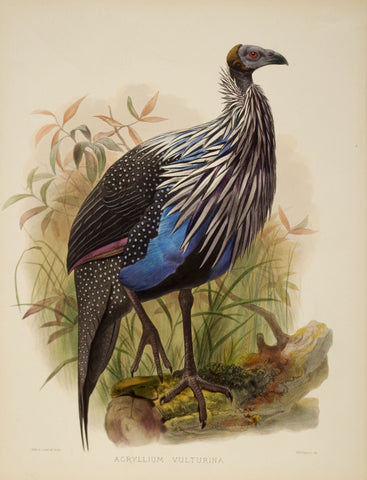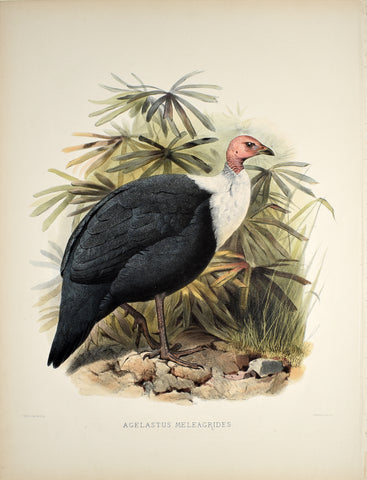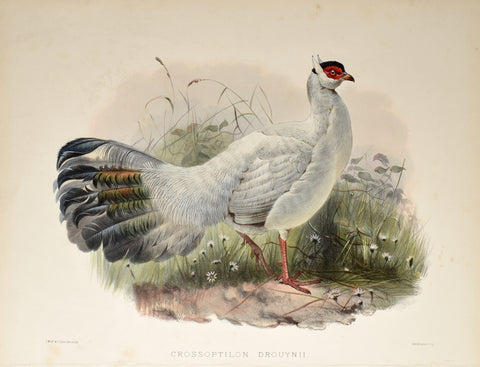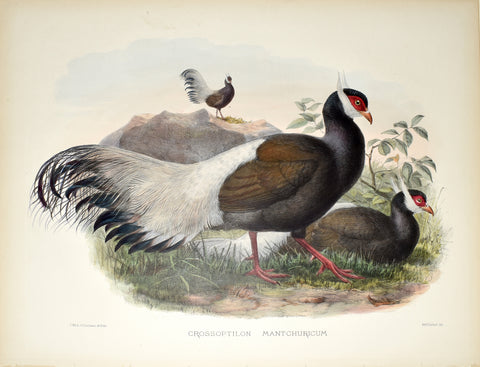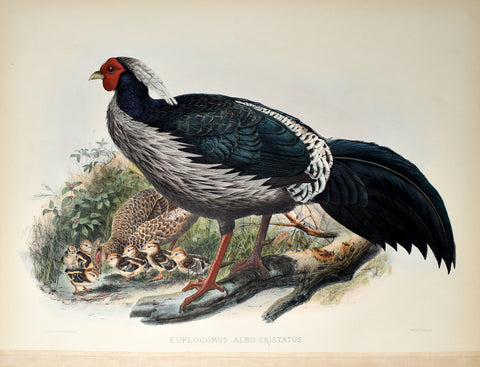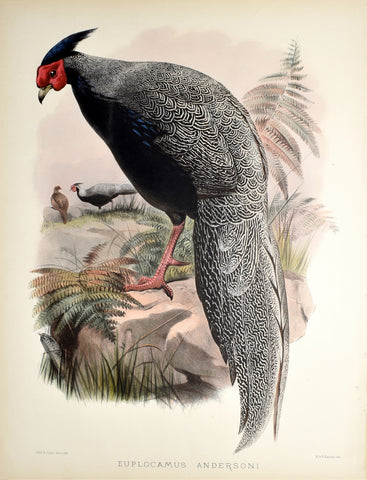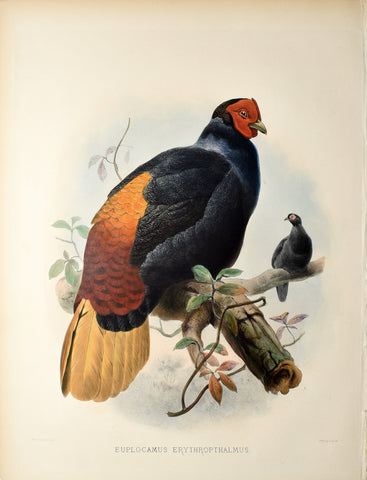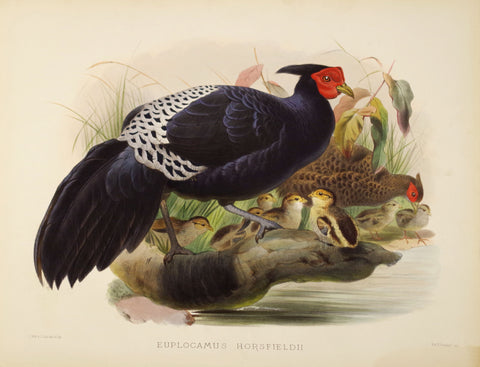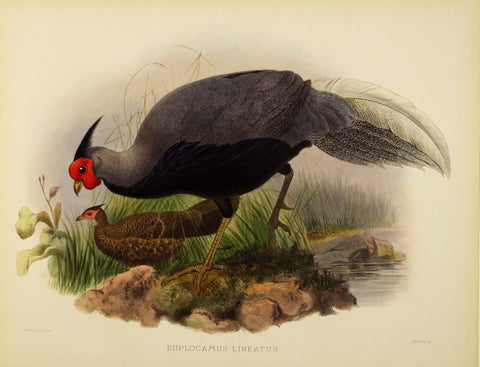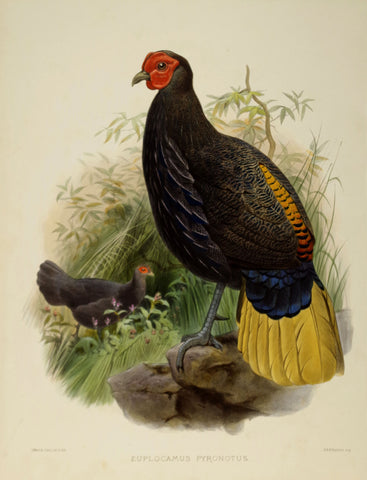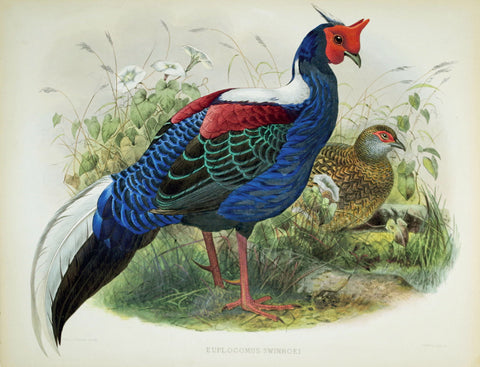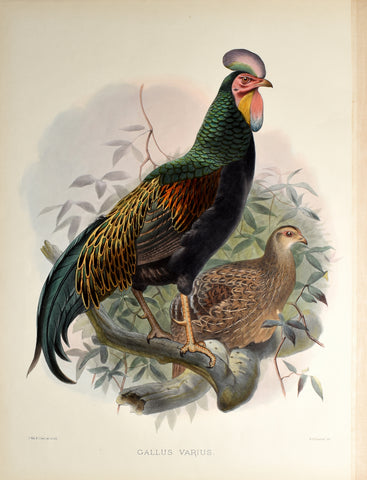Search By Artist
- Daniel Giraud Elliot
- Pheasants
- Black Backed Kaleege
- Black Guinea Fowl
- Black Phasid
- Blood Pheasant
- Blue Eared Pheasant
- Bronze Tailed Peacock Pheasant
- Brown Eared Pheasant
- Burmese Pheasant
- Cassin's Guinea Fowl
- Chestnut Throated Partridge
- Crested Guinea Fowl
- Eastern Crested Guinea Fowl
- Elliot Pheasants
- Fork Tailed
- Great Argus
- Grey Peacock Pheasant
- Hodgson's Eared Pheasant
- Jungle Fowl
- Kiroro Guinea Fowl
- Lithograph
- Monal
- Pucheran's Guinea Fowl
- Rufous Tailed Pheasant
- Sclater's Monal
- Sumatran Peacock Pheasant
- Tiara'd Guinea Fowl
- Tibetan Eared Pheasant
- Tufted Guinea Fowl
- Verreaux's GuineaFowl
- Western Crested Guinea Fowl
- White Crested Kaleege
- White Eared Pheasant
- White-Breasted Guinea Fowl
Daniel Giraud Elliot (1835-1915), Pheasants
Monograph of Phasianidae.
New York: Published by the author, 1870-1872.
Lithographs with original hand-coloring
Elliot's glorious work on pheasants is described by Sitwell as 'the equal in every way to any work by Gould'. R.M. Mengel went further, noting that 'of the great nineteenth-century ornithological monographs, none save Audubon's is so sumptuous' ("Beauty and the Beast: Natural History and Art", The Living Bird, 1979-1980). The large size of the plates allied with the meticulous way in which they are colored, gives them a magnificence which reflects the importance which Elliot attached to the Phasianidae. Of all the families in the ornithological system, he regarded it as the one most vital to the human race, 'containing within it the species that afford food for thousands of mankind, and also those which are the original source of all the domestic poultry met with throughout the civilized world.' He generously dedicated the work 'To my friend Joseph Wolf... whose unrivalled talent has graced this work with its chief attraction, and whose marvellous power of delineating animal life renders him unequalled in our time'.
Daniel Giraud Elliot was born in New York, but later moved to Chicago to serve as Curator of Zoology at the Field Museum of Natural History in Chicago. His great wealth and interest in ornithology enabled the production of a series of sumptuous color-plate books on birds, long after most publishers had turned to smaller formats and cheaper coloring techniques. Elliot commissioned the best bird artists of the day including Joseph Wolf and Josef Smit, both of whom had worked for John Gould. Although less expensive methods of color reproduction were in use when this monograph was published, Elliot required hand-colored lithographs. Fortunately, his independent fortune allowed him to produce his work on the lavish scale he desired. Elliots earlier monographs had hand-colored lithographs by Bowen & Co. of Philadelphia. However, J.T. Bowens’ widow closed the firm in 1869 and Elliot was forced to look outside the United States. He moved to Europe and had the plates for the rest of his books produced in Belgium, although he continued to use a New York imprint. The Monograph of Pheasants was originally issued in 6 parts between June 1870 and October 1872. Recent documentary evidence suggests that the lithograph stones to this work were destroyed after only 150 copies were taken (see Sothebys London, 5 June 2001).
Elliot made his intentions quite clear in the preface: "Since the time of Wilson and Audubon, no work has been published upon American Ornithology, containing life-size reproductions of the various species that have been discovered since the labors of those great men were finished… It was, therefore, with the desire to contribute, as might be in my power, towards the elucidation of the comparatively little known species of the Birds of North America, their habits and economy, as well as to render their forms familiar so far as life-size representations of them might serve to do, that I undertook the present publication." Elliot made the inspiration that his predecessors had provided even clearer by dedicating his Birds of North America to the memory of Alexander Wilson.
Anker 130; Fine Bird Books p. 74; Nissen IVB 295; Wood p. 331; Zimmer p. 206.


